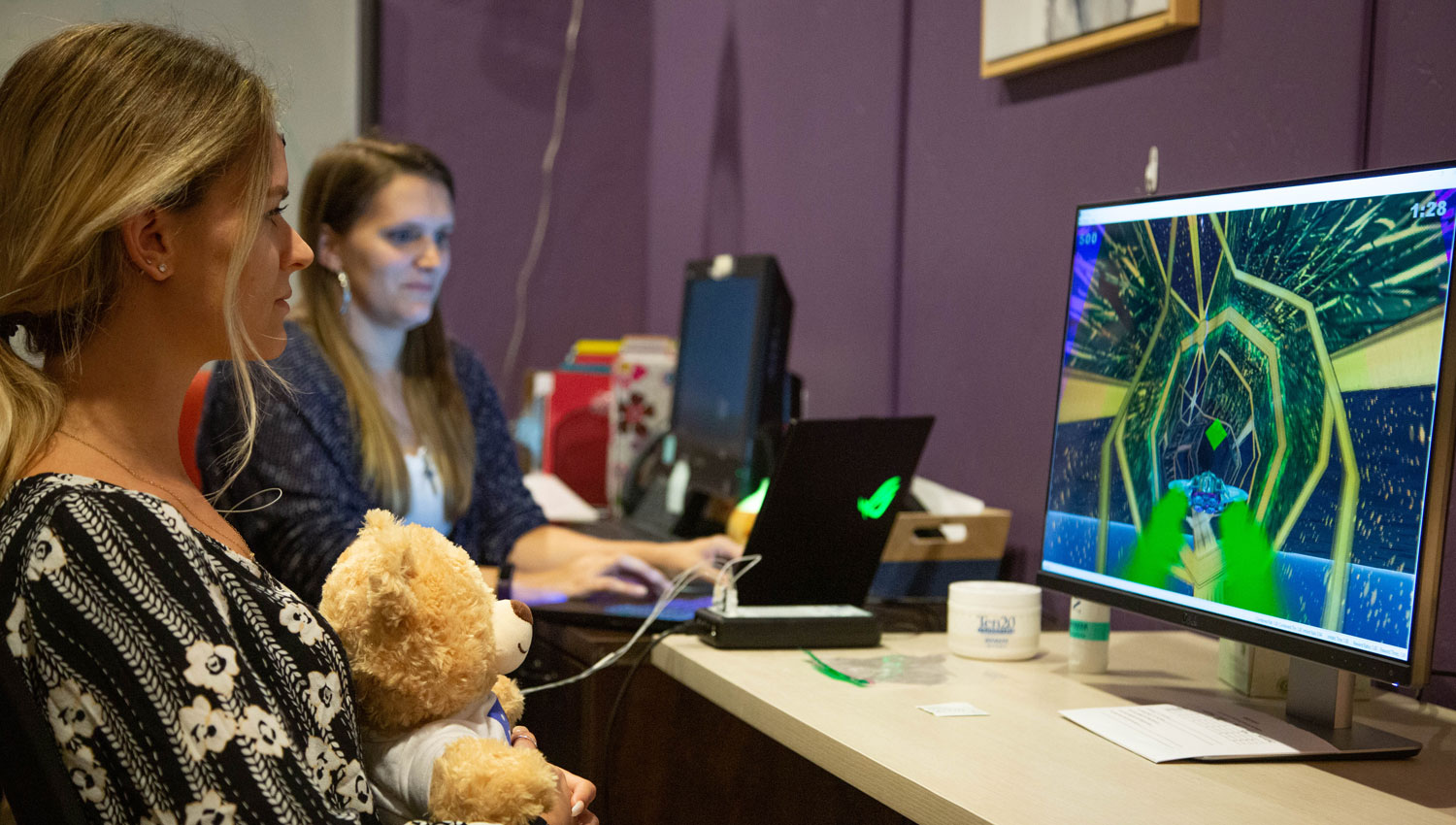
Neurofeedback
Encouraging self-regulation for more effective treatment
Retraining the Brain
Our Brain Centers — offering neurofeedback, biofeedback, cranio-electro stimulation, heart-rate variability, and chi machines — encourage self-regulation and resiliency in patients. This makes treatment more effective and leads to more successful long-term recovery. Traditional treatments are focused on the pre-frontal cortex of the brain, but if you’re seeking treatment for addiction, your prefrontal cortex is going to be out of balance. Our Brain Center’s limbic system therapy focuses on regulating the central nervous system, resulting in less anxiety, fewer withdrawal symptoms, better sleep, and a more effective treatment experience.
Improving the brain’s self-regulation allows the brain to work more efficiently and helps an individual function in a healthier way. In addition to offering neurofeedback, each Meadows Outpatient location includes a separate meditation room, a “self-serve” space that allows patients to take advantage of several different types of equipment, each with a specific purpose but the shared aim of decreasing anxiety, reducing stress, improving sleep, aiding digestion, and increasing oxygen and blood flow to the brain. For many therapies, patients recline in comfortable chairs with dim lighting and the option to use a weighted blanket.
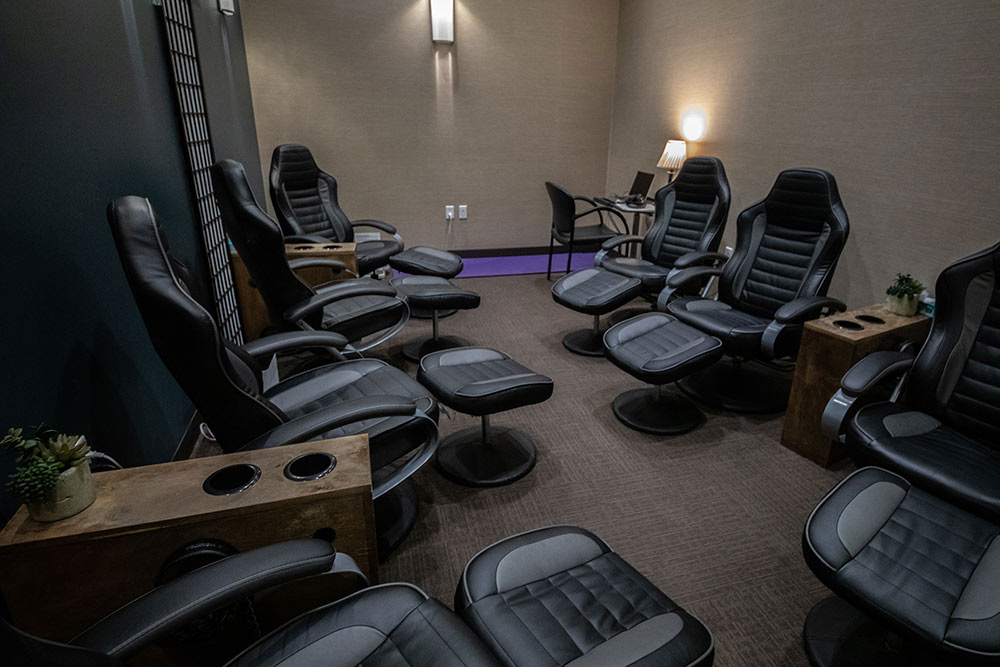
The Trauma Connection
People who suffer from psychological trauma symptoms tend to have brain stems that are “dysregulated” (i.e., not well organized). When the brain stem is not well-organized, it can cause other parts of the brain to not function as well as they potentially could. When this happens, a person’s ability to think clearly, analyze, understand, and make as good judgments can become compromised. By addressing this dysregulation we can improve brain function, enabling patients to respond better to treatment.

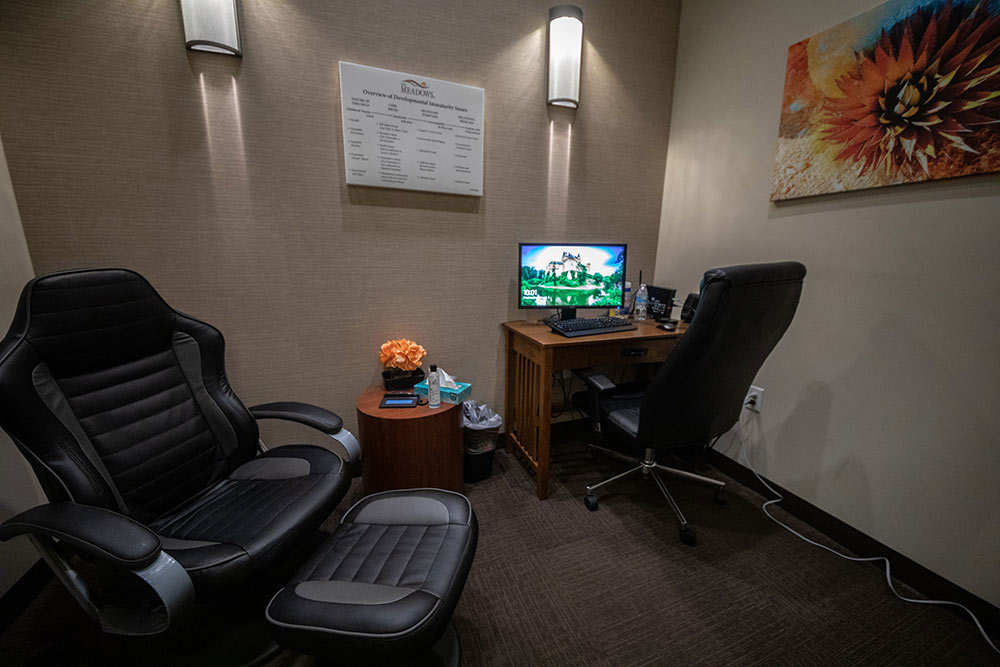
The services offered through The Meadows’ dedicated trauma department include a variety of individualized, biofeedback devices that are not conducive to a group format. In our innovative Brain Center, patients can utilize state-of-the-art equipment to aid in grounding and self-regulation to confront the deeper issues with a “calmer spirit.” This cutting-edge approach addresses the neuroscience of trauma by attempting to better regulate the limbic system in the brain, which allows for better integration and implementation of more traditional approaches incorporated in the treatment process.
Neurofeedback Therapy
Neurofeedback (EEG Biofeedback) is the direct training of brain function, by which the brain learns to function more efficiently. We observe the brain in action from moment to moment and show that information back to the individual. The brain is rewarded for changing its own activity to more appropriate patterns. Once we determine the level of the different brainwave frequencies, protocols are developed for training the brain to make more or less of specific frequencies.
Neurofeedback is a gradual learning process, and it applies to any aspect of brain function that we can measure. Neurofeedback is also called EEG Biofeedback because it is based on electrical brain activity, the electroencephalogram, or EEG. Neurofeedback is training in self-regulation. It is simply biofeedback applied to the brain directly. Self-regulation is a necessary part of good brain function. Self-regulation training allows the system (the central nervous system) to function better. Changing the EEG improves the self-regulation of brain waves and brain state. When the brain works better, the individual functions better.
Neurofeedback addresses problems of brain dysregulation, including:
- Anxiety
- Depression
- PTSD
- Attention deficits
- Behavior disorders
- Addictive disorders
- Traumatic Brain Injury
- Various sleep disorders
- Headaches
- Migraines
- PMS
- Emotional disturbances and organic brain conditions such as:
- Seizures
- The autism spectrum
- Cerebral palsy
How it Works
We apply electrodes to the scalp to observe brainwave activity. The signal is processed by a computer so we can see information about certain key brainwave frequencies. This information is presented to the person in the form of a visual display/video game. The person is controlling the video game with their brain.
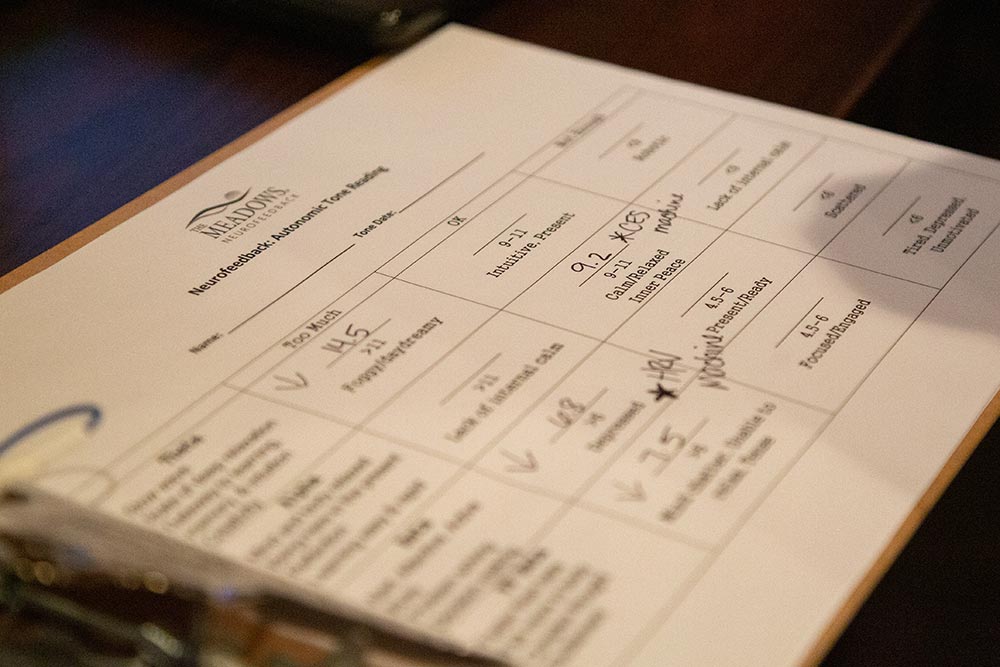
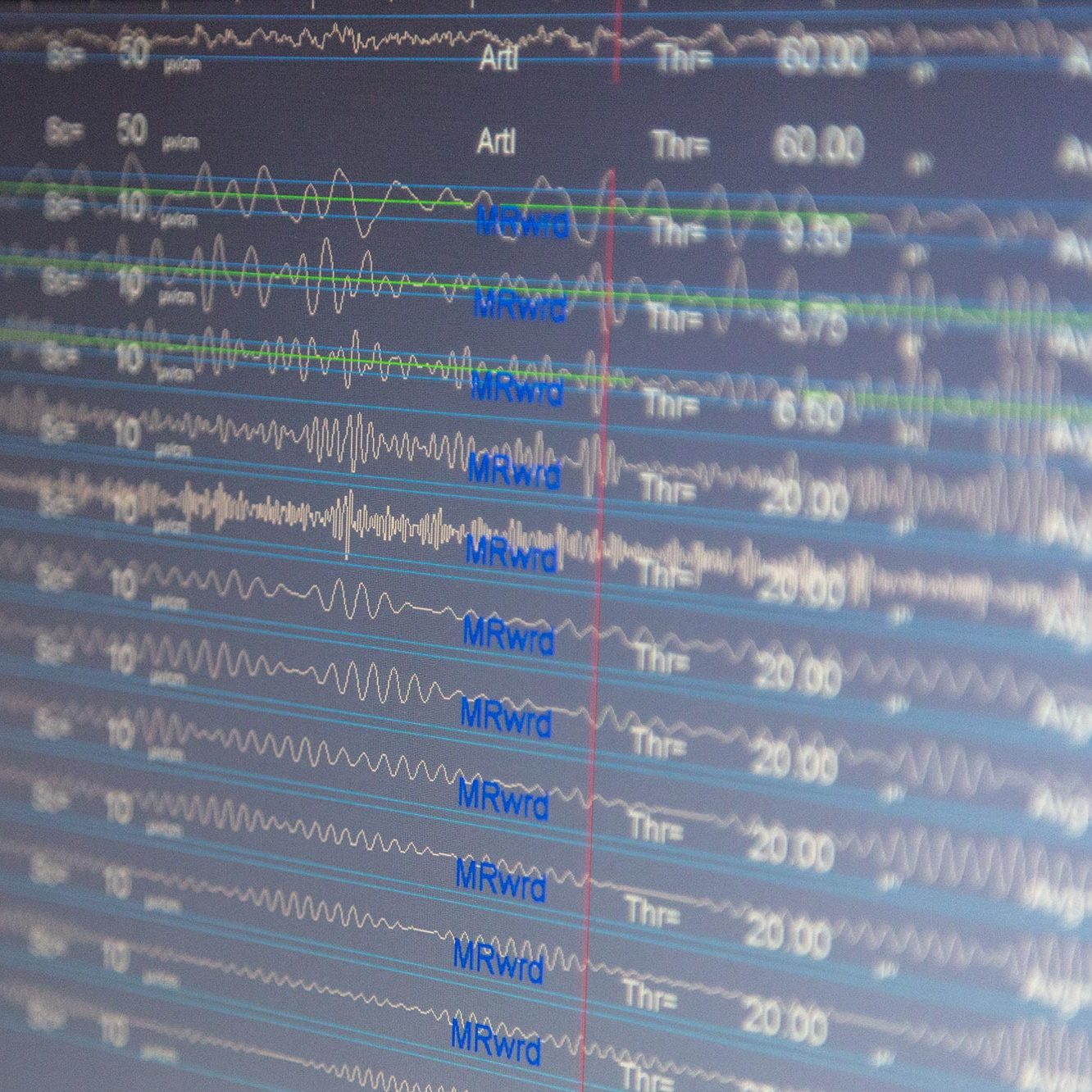
We show the ebb and flow of this activity back to the person, who attempts to change the activity level. This is done from the feedback process rewarding the brain for producing more of the desired levels of activity. The individual then attempts to shape their brainwave activity towards a more regulated pattern. The frequencies we target, and the specific location on the scalp, are specific to the conditions we are trying to address and specific to that individual.
Reach Out Today
Convenient, comprehensive care is available. Your next chapter can start right now.
